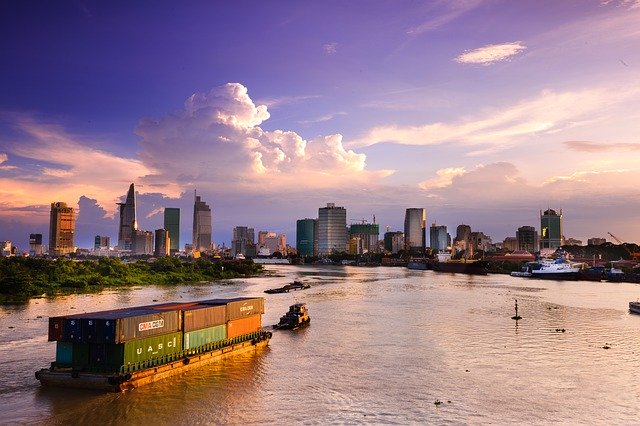Amid trade tensions, the pandemic and a global recession, global value chains (GVCs) in Asia are being tested and reconfigured like never before, according to economists at the ASEAN+3 Macroeconomic Research Office (AMRO).
Hoe Ee Khor and Suan Yong Foo, chief economist and senior economist at AMRO, respectively, said in a new commentary that three key forces will shape the reconfiguration of GVCs in Asia over the coming years.
First, US-China trade tension will prompt many firms—including Chinese ones—to shift production from China to other Asian countries, especially ASEAN countries, to avoid the tariffs and other economic sanctions being imposed by the United States on China.
Concern over supply disruption due to the concentration of production in China is expediting this relocation process, the economists observed.
In turn, many ASEAN countries are ready to receive new investments from China and elsewhere as they have been upgrading their technological capacity and human capital over the past decade in pursuit of a manufacturing-led export growth strategy.
“This has put them in a good position to move up the production value chain in anticipation of the Fourth Industrial Revolution,” the experts said.
Second, the COVID-19 pandemic has renewed the region’s emphasis on diversification and resilience, even if this may create some inefficiencies and a moderately slower growth rate for a couple of years as factories, suppliers and workers adapt.
Countries and businesses are looking to diversify in order to reduce their vulnerability to production and supply-side shocks, including widespread value chain disruptions brought on by the pandemic, the economists said.
“Whether it is for critical products or key manufacturing components, diversifying sources of supply while maintaining an adequate stock of reserves is the surest and most cost-effective way to prevent supply disruptions,” they noted.
Third, the global shift to a technology-driven “new economy” will continue. As economies become more advanced, capital and labor returns will diminish and the premium on innovation and creativity will increase.
“Technologically-ready countries will be able to respond to and manage disruptions more smoothly and at a lower cost. Indeed, despite lurking cybersecurity threats, the pandemic has accelerated the adoption of digital technology and the shift to the new economy,” said the analysts.
But Hoe and Suan also observed a new development—the rise of “Shopper Asia” even as the region remains “Factory Asia.” This is the outcome of domestic demand increasing across the region, and Asia expanding its linkages with other economies across the world.
“The region’s rapid income catch-up has created a large middle class. Its increasing affluence means that Asia is now a key source of demand for goods and services produced regionally and globally. The region is no longer just producing goods for export to the West—it has become the largest consumer market for its own products and other global products,” the commentary explained.
Growth in demand is seen particularly for high-end electronic products such as smartphones, drones, online gaming, and smart appliances.
The economists also predict that Asia will become more integrated over time as the regional supply chain grows stronger and as demand for intra-regional trade in goods and services increases.
The region’s supply chain is also seen to strengthen from leveraging and building linkages with emerging market economies in South Asia, the Middle East, Latin America, and Africa through free trade agreements, bilateral investment treaties, and broader economic partnerships.
The regional supply chain is also expected to benefit from infrastructure development works to facilitate cross-border production and trade, enhance connectivity, and support digital technology.
Image by Quang Nguyen vinh from Pixabay









